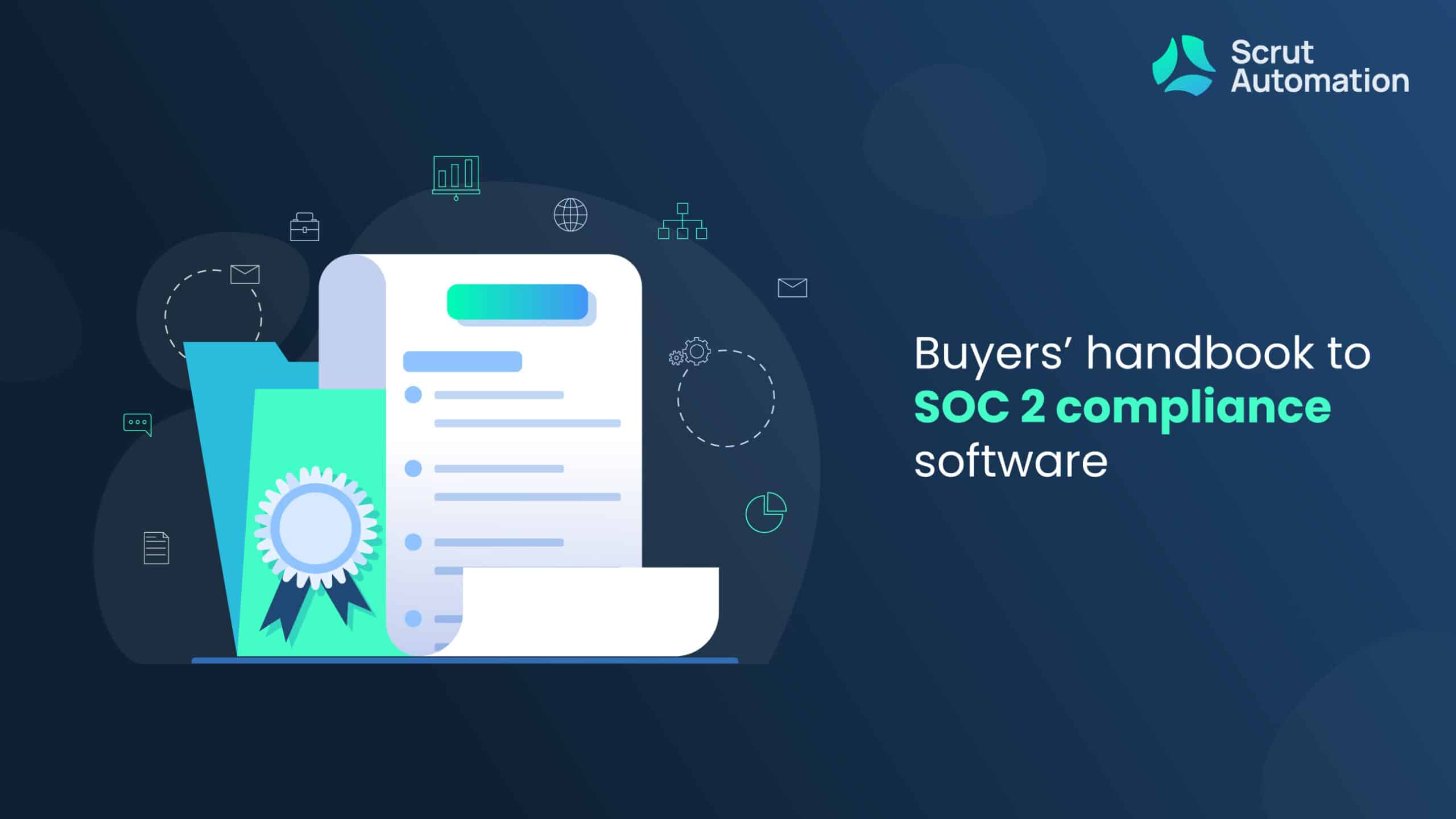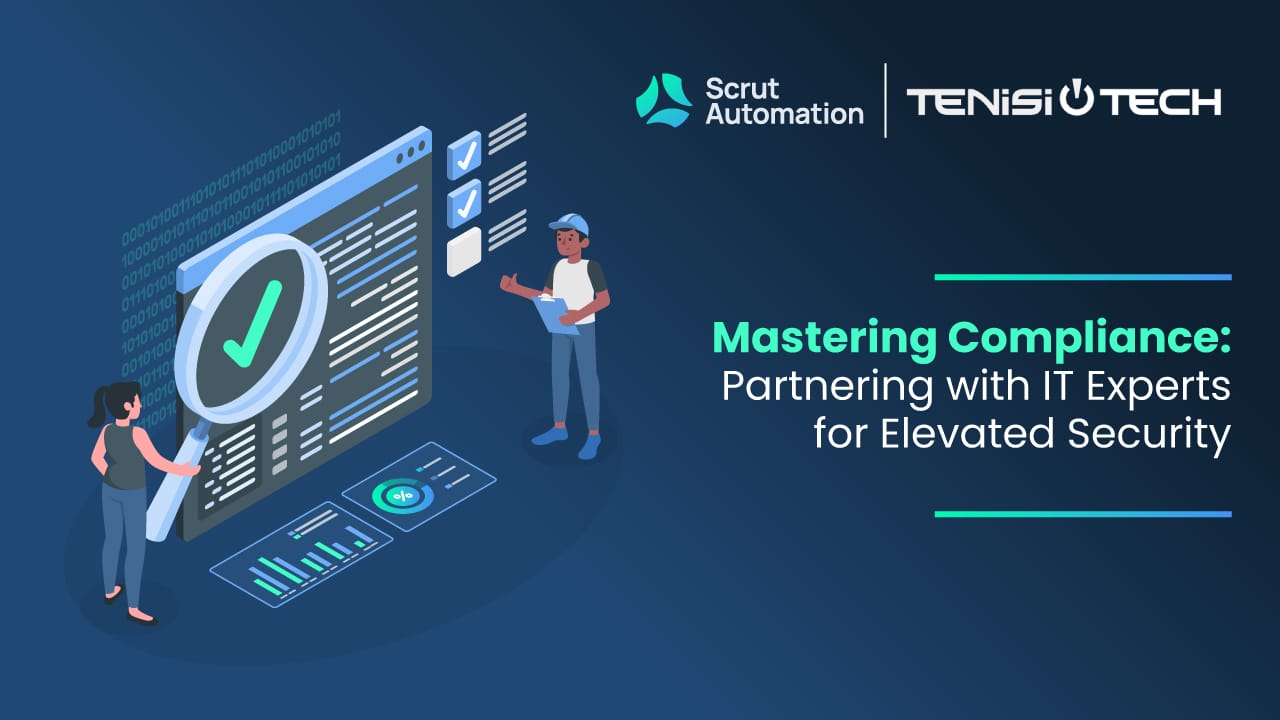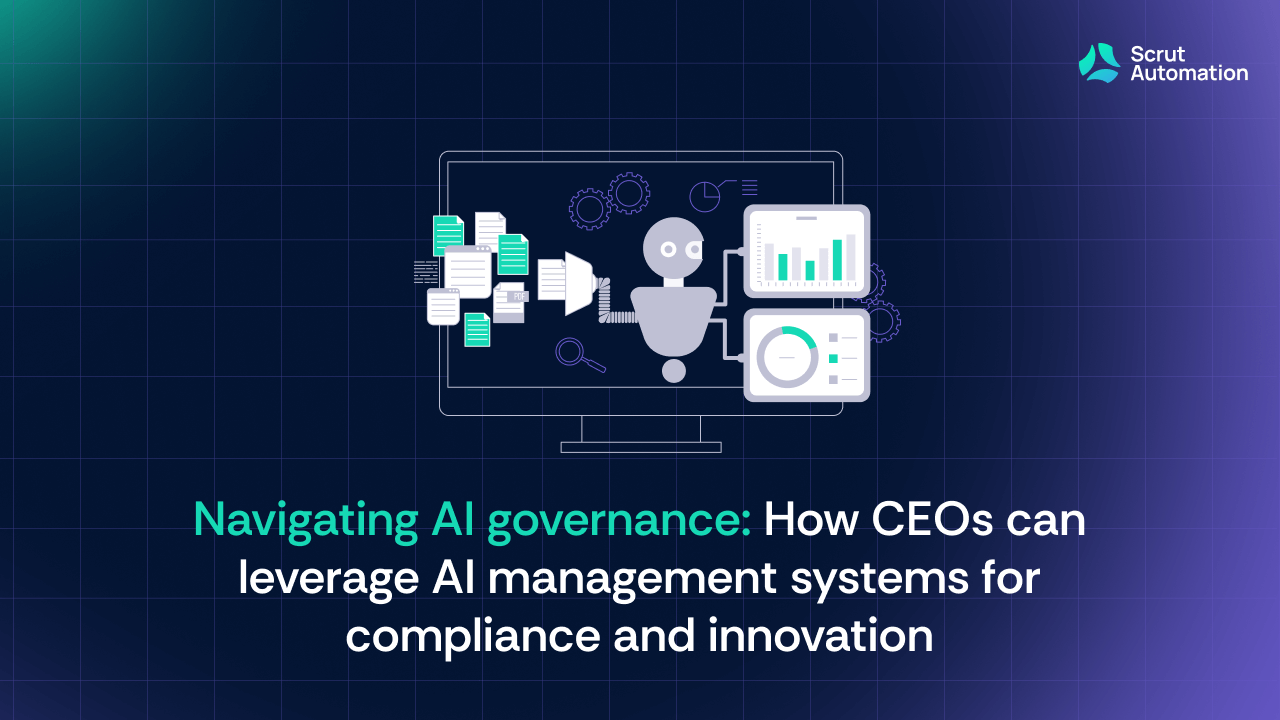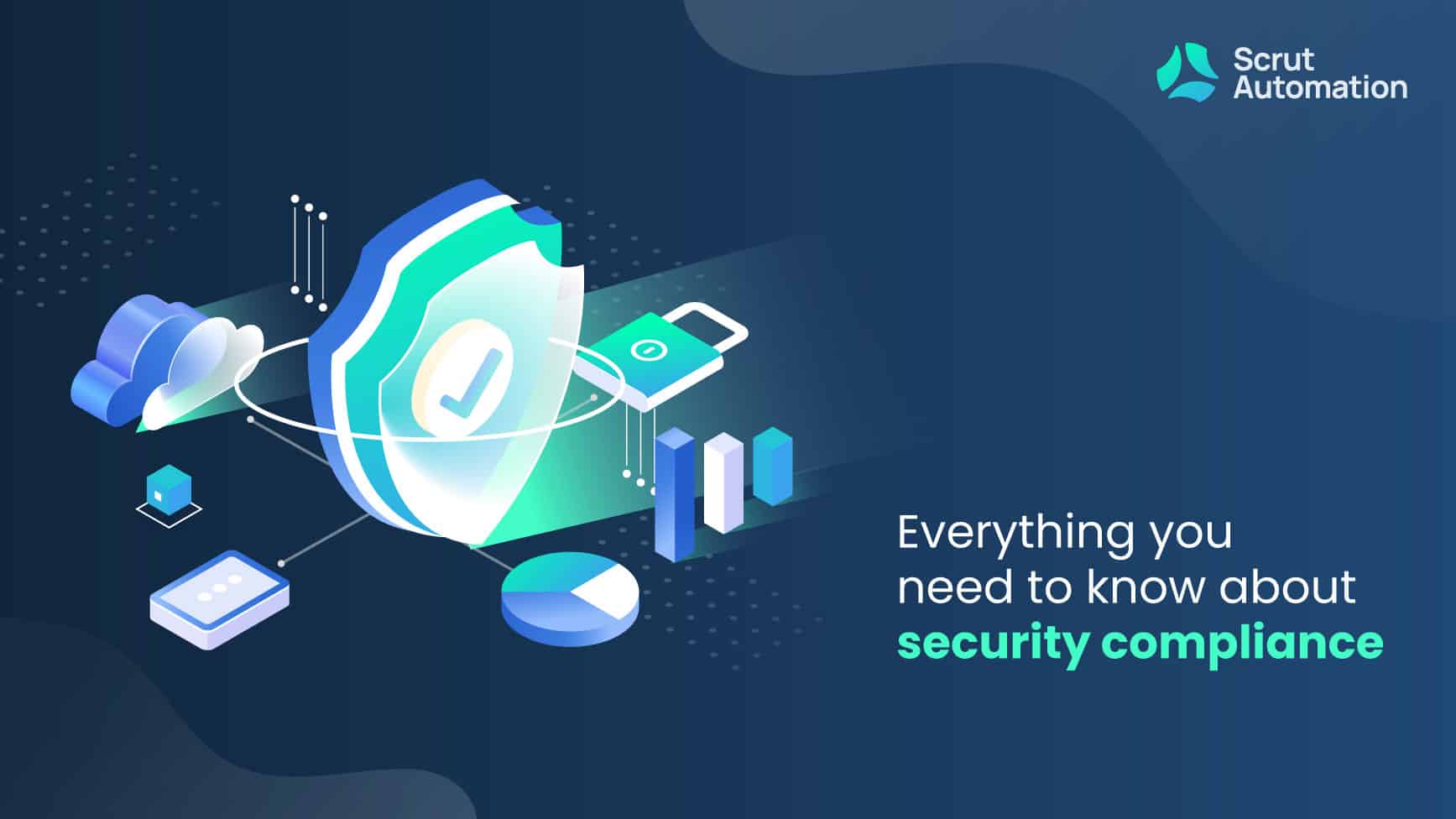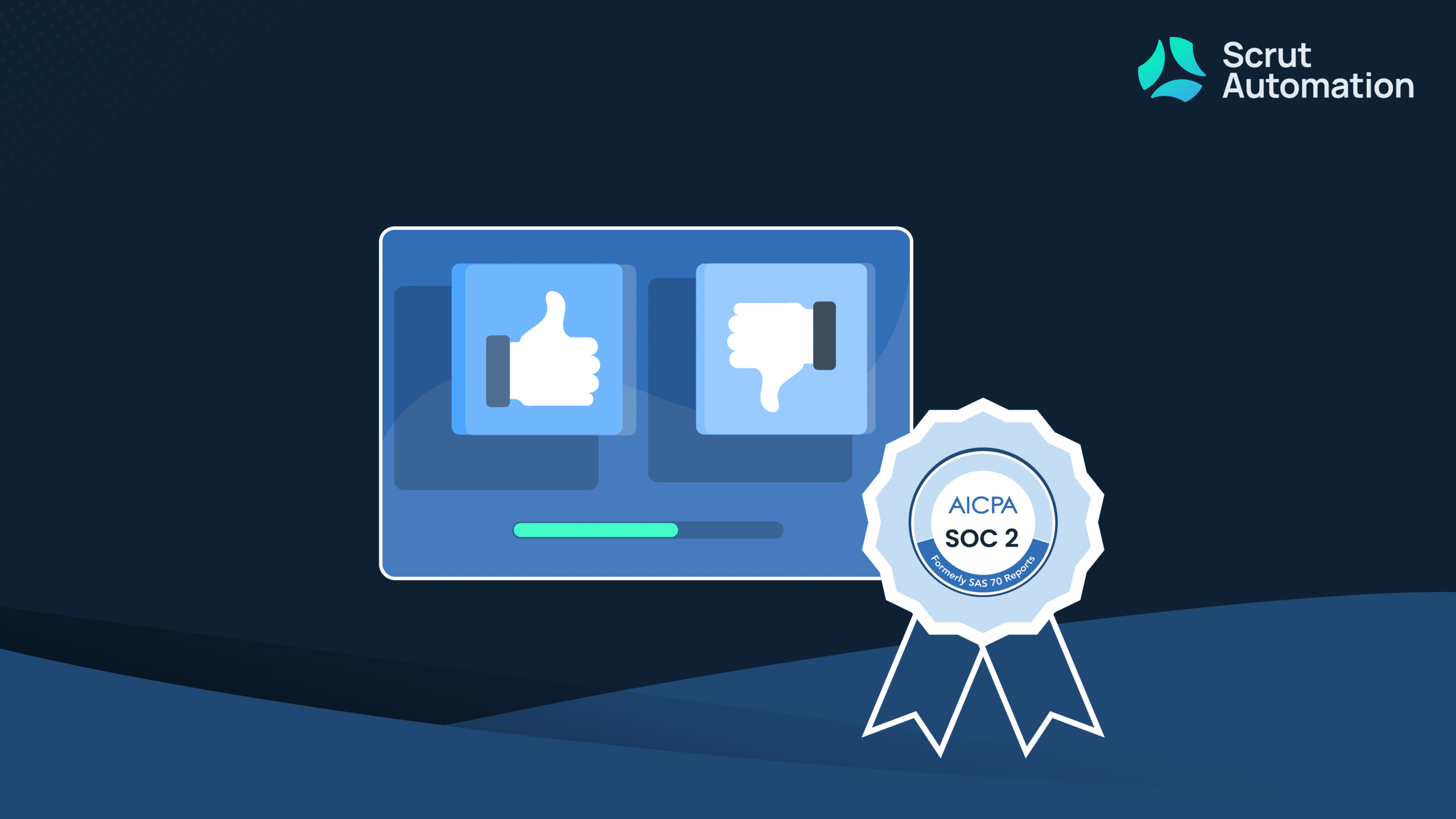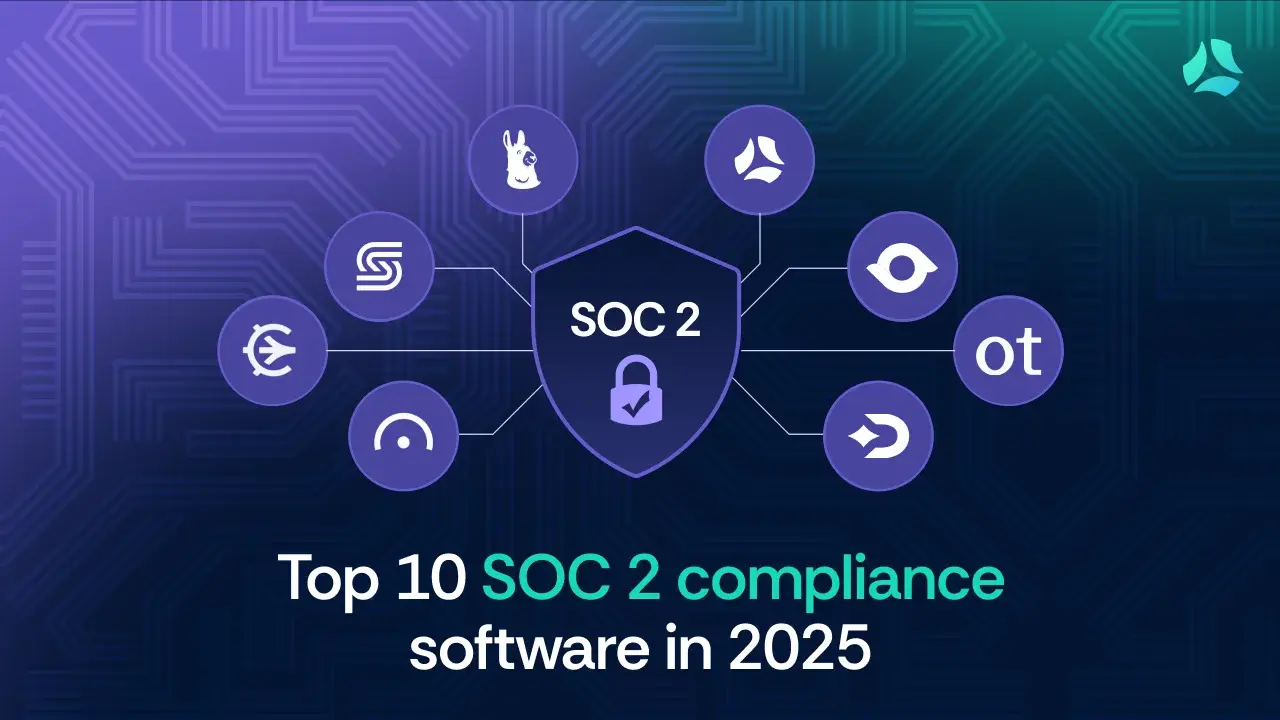As data breaches and security incidents continue to make headlines, businesses are under increasing pressure to safeguard their sensitive information and protect the privacy of their customers. SOC 2 compliance has emerged as a vital standard for service organizations, ensuring they meet stringent security, availability, processing integrity, confidentiality, and privacy requirements.
At its core, SOC 2 compliance is not just a checkbox exercise; it is a commitment to prioritizing the security and privacy of the data entrusted to your organization. Achieving SOC 2 compliance requires the implementation of robust controls and practices, and investing in the right SOC 2 compliance software can play a pivotal role in simplifying and enhancing the compliance journey.
The crux of this guide lies in helping you make an informed decision when choosing the ideal SOC 2 software for your organization. We will explore the key features and capabilities that top-notch compliance software solutions offer, enabling you to align them with your unique compliance requirements.
What is SOC 2 compliance software?
SOC 2 compliance software is a specialized technology solution designed to facilitate and streamline the process of achieving and maintaining SOC 2 compliance. It empowers organizations to effectively implement and manage the necessary security controls and practices required to meet the Trust Services Criteria (TSC) defined by the American Institute of CPAs (AICPA).
The TSC includes security, availability, processing integrity, confidentiality, and privacy, which are essential elements for ensuring the security and privacy of sensitive data.
SOC 2 compliance software serves as a central platform that enables organizations to assess, monitor, and demonstrate their adherence to SOC 2 requirements.
What are the key features of SOC 2 compliance software?
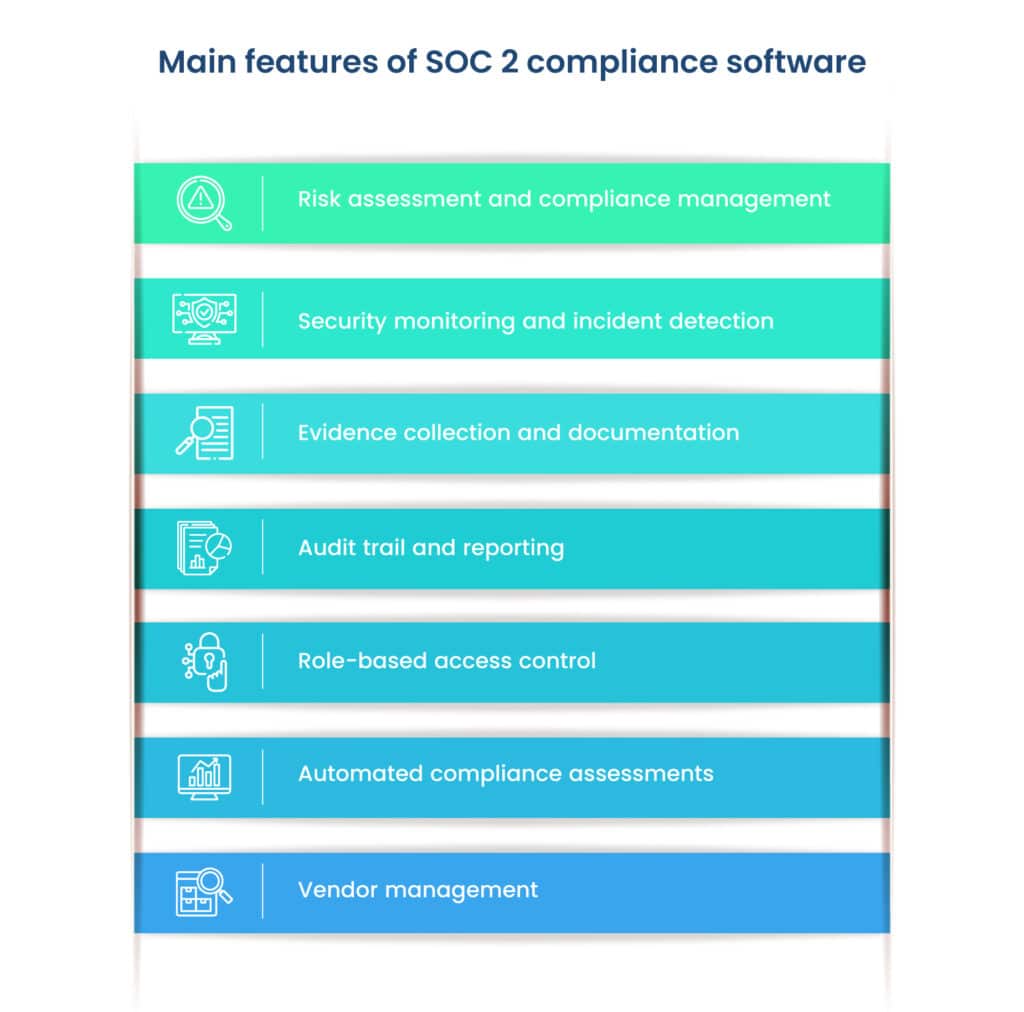
A SOC 2 compliance software typically offers the following features:
1. Risk assessment and compliance management
SOC 2 software allows organizations to conduct comprehensive risk assessments and identify potential security vulnerabilities and gaps in controls, streamlining the compliance management process, enabling efficient tracking and resolution of compliance-related issues.
2. Security monitoring and incident detection
The software provides real-time monitoring of security controls and helps detect and respond to potential security incidents promptly. It may include intrusion detection, log management, and event correlation capabilities.
3. Evidence collection and documentation
SOC 2 compliance requires organizations to provide evidence of their compliance efforts. Compliance software facilitates the collection and organization of evidence, such as audit logs, policies, and procedures, making it easier to generate necessary reports and documentation for audits.
4. Audit trail and reporting
SOC 2 compliance software offers audit trail functionality to track changes made to security settings and configurations. It also generates detailed compliance reports that can be shared with auditors, clients, or business partners.
5. Role-based access control
To maintain data security, SOC 2 software often incorporates role-based access control mechanisms, ensuring that only authorized personnel have access to sensitive information and compliance-related tasks.
6. Automated compliance assessments
The software automates the assessment of controls and practices against SOC 2 requirements. This automation reduces manual efforts and human errors, making the compliance process more efficient.
7. Vendor management
For organizations that rely on third-party service providers, SOC 2 compliance software may include features to manage and monitor vendor compliance to ensure that their vendors’ activities align with SOC 2 standards as well.
What are the different types of SOC 2 compliance software on the market?
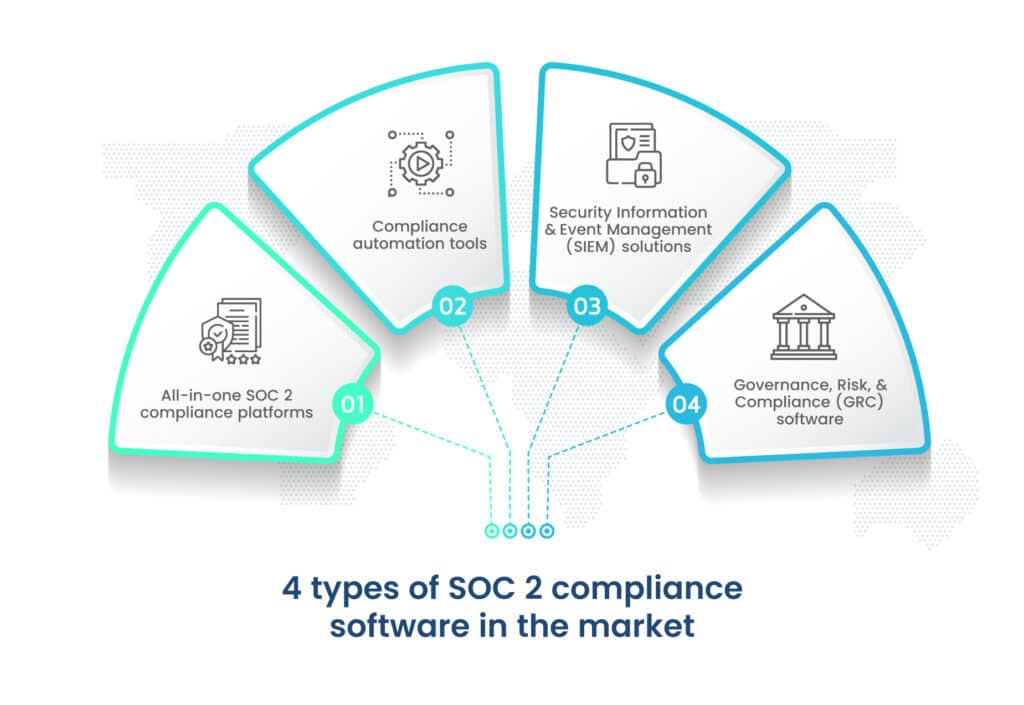
There are various types of software solutions available to assist organizations with SOC 2 compliance. These solutions are aimed at streamlining the process of preparing for and undergoing SOC 2 audits.
Different types of SOC 2 compliance software in the market are:
1. All-in-one SOC 2 compliance platforms
These comprehensive solutions offer end-to-end support for SOC 2 compliance. They encompass a wide range of features, including risk assessment, audit management, incident response, evidence collection, and reporting.
2. Compliance automation tools
These tools focus on automating specific compliance-related tasks, such as evidence collection, audit trail management, or continuous monitoring. They are often used to complement existing compliance processes.
3. Security Information and Event Management (SIEM) solutions
SIEM platforms provide robust security monitoring capabilities, which can be valuable for organizations seeking real-time threat detection and incident response in line with SOC 2 requirements.
4. Governance, Risk, and Compliance (GRC) software
GRC solutions offer a broader scope, helping organizations manage various compliance initiatives, including SOC 2 compliance, alongside other regulatory requirements.
Choosing the right type of SOC 2 software depends on an organization’s specific needs, existing infrastructure, and budget. Evaluating the features and capabilities of each type will help organizations find the best fit for their compliance journey.
What are the factors to consider when choosing SOC 2 compliance software?
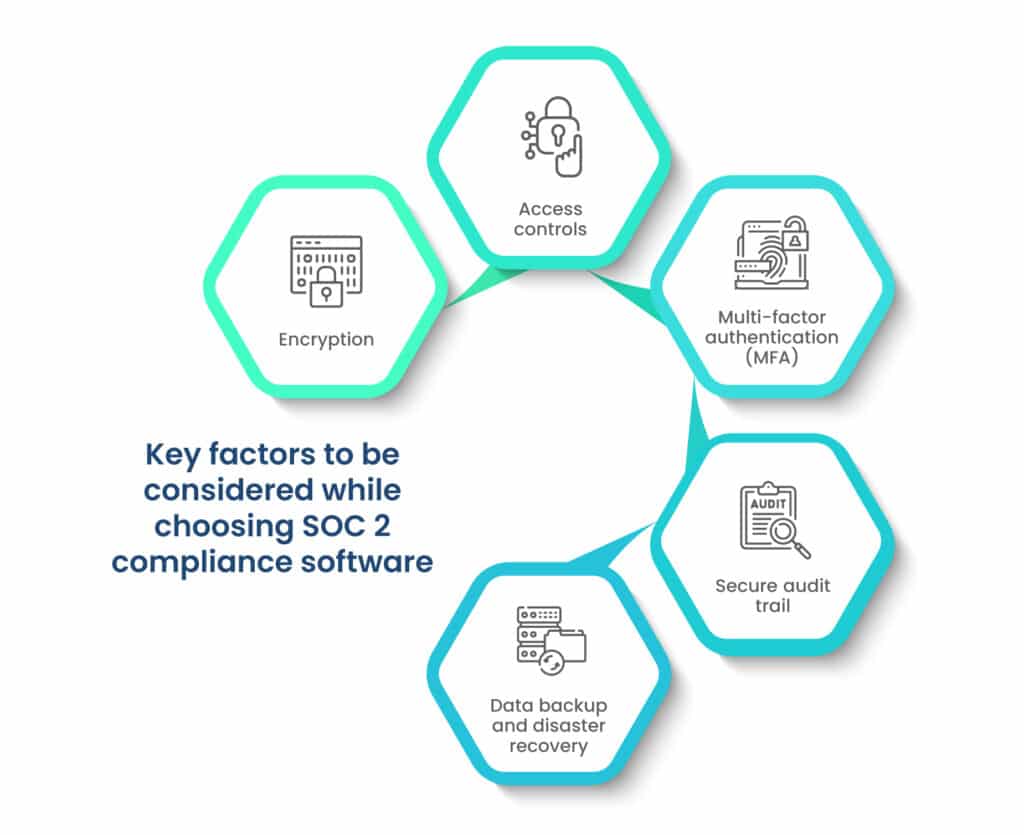
Every organization has different needs. As we saw earlier, there are different solutions available in the market for SOC 2 compliance. So, how can an organization choose the right solution? Well, an organization should consider the following factors while selecting SOC 2 compliance software:
A. Security and data protection features
- Encryption: Ensure the software supports encryption of data at rest and in transit to protect sensitive information from unauthorized access.
- Access controls: Look for role-based access controls to limit access to compliance-related tasks and data based on users’ roles and responsibilities.
- Multi-factor authentication (MFA): MFA adds an extra layer of security by requiring users to provide multiple forms of authentication before accessing the software.
- Secure audit trail: The software should maintain a tamper-proof audit trail to track changes made to security settings and configurations.
- Data backup and disaster recovery: Verify that the software provides data backup and disaster recovery capabilities to protect against data loss.
B. Flexibility and customization options
- Scalability: Choose a software solution that can scale with your organization’s needs as it grows, ensuring long-term usability.
- Customizable controls: The ability to customize compliance controls to align with your organization’s unique requirements is essential for a tailored compliance approach.
- Configurable reporting: Look for software that allows you to generate custom reports, giving you the flexibility to present compliance information in a way that suits your stakeholders.
C. Integration with existing systems
- API and integration support: Ensure the SOC 2 software offers APIs and integration capabilities with your existing tools and systems, such as IT asset management, SIEM, or ticketing systems.
- Seamless data flow: The software should enable smooth data flow between different systems to avoid data silos and enhance efficiency.
D. User-friendliness and ease of deployment
- Intuitive interface: A user-friendly interface simplifies the adoption of the software and reduces the learning curve for your team.
- Training and documentation: Look for available training resources and documentation to support your team in effectively using the compliance software.
- Time to deployment: Evaluate the time required to deploy and configure the software to ensure it aligns with your implementation timeline.
E. Vendor reputation and support services
- Vendor track record: Research the vendor’s reputation, customer reviews, and references to gauge their track record of providing reliable software and services.
- Customer support: Ensure the vendor offers responsive customer support, as quick assistance can be crucial during critical compliance situations.
- Regular updates and maintenance: Choose a vendor that consistently updates the software to address security vulnerabilities and provides regular maintenance and support.
- Compliance assistance: Some vendors offer additional compliance support services, such as expert consultations, which can be valuable for organizations navigating complex compliance requirements.
Example of an effective SOC 2 compliance software
Scrut is a risk-first compliance automation platform that offers SOC 2 compliance services to organizations. It is a prime example of effective SOC 2 compliance software as it provides automated capabilities such as evidence collection, automatic reminders, misconfiguration detection, automated employee training, task management, and more, making the process more efficient and reducing the risk of human error.
Here are a few features that make Scrut stand out in the market today.
Integrations
Scrut integrations can automate more than 65% of the evidence-gathering process for SOC 2 controls across your application and infrastructure landscape. With integrations, Scrut smartGRC reduces the burden of evidence collection. The platform integrates across application landscapes, such as HRMS, endpoint management, and other tools, to automate the manual evidence collection process. It offers over 70+ integrations. For a complete list of integrations, click here.
Pre-build policy templates customized for your industry
One of the most valuable features of a SOC 2 platform is pre-built templates for policies and procedures. An effective SOC 2 compliance automation software should provide you with auditor-approved security policies that you can use to build your compliance program.
With Scrut, users can customize their policies using the built-in editor and review them with our in-house SOC 2 compliance experts.

Users can set up the SOC 2-compliant InfoSec program in minutes by leveraging 50+ pre-built policies.
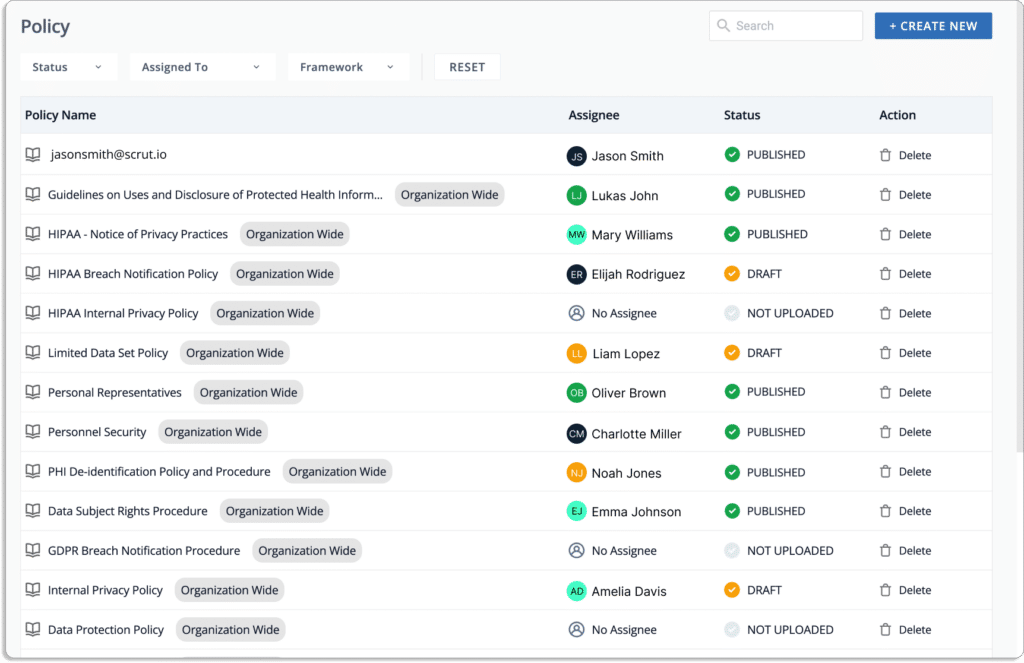
You can also upload your policy by clicking the “create new” button on the top right corner.
Employee security training
Check whether the organization is providing employee security awareness training or if you need to partner with another vendor for training. The awareness training aims to educate users and employees about their role in preventing data breaches.
Users can automate employee information security training with Scrut. The tool provides a prebuilt 30-minute information security course created by industry experts. Your employees can review policies, notifications, and security procedures all in one place. Scrut’s dashboard allows users to track training completion status and employee acknowledgment.
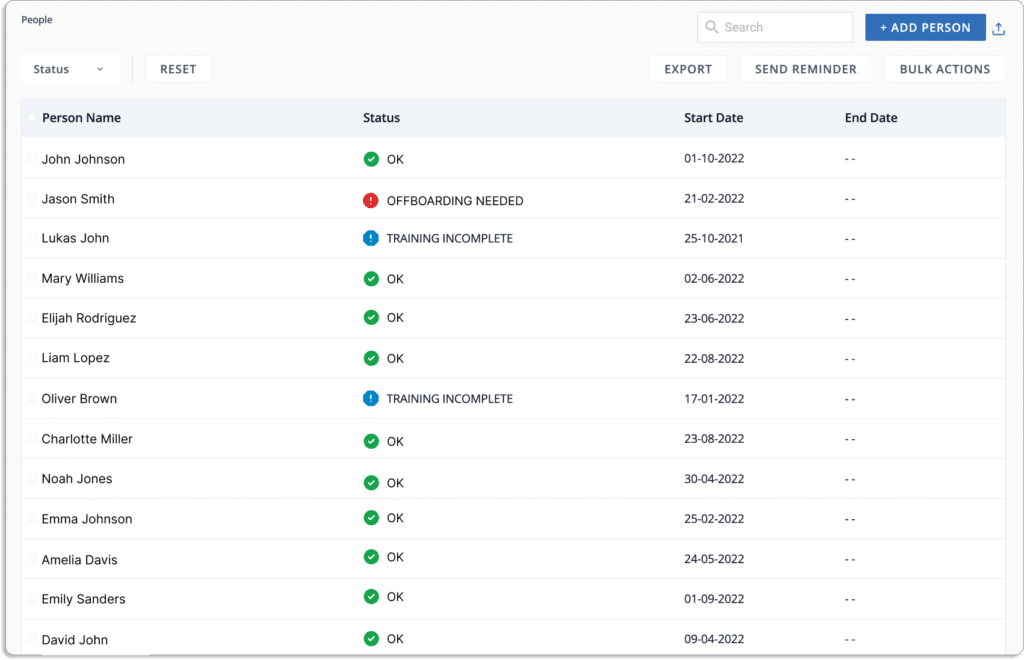
Risk management capabilities
One of the significant use cases of the SOC 2 tool is risk management capability. A SOC 2 audit, as well as many other security frameworks, requires risk management.
Risk management is a system of people, processes, and technology that allows an organization to set goals aligned with its values and risks. Your SOC 2 software should assist in identifying and evaluating potential threats to your business.
Let’s understand this with the example of Scrut, our platform. Scrut Risk Management provides a smarter way to assist users in recognizing, evaluating, and mitigating IT and cyber risk.
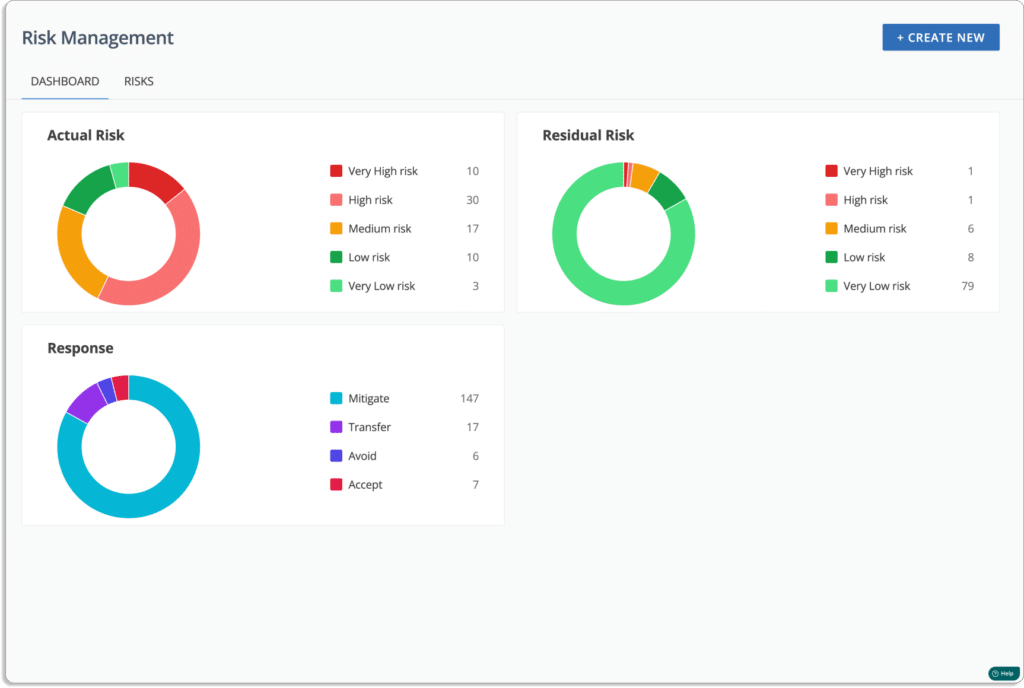
With Scrut, you can gain complete visibility of your risk posture. When it comes to business priorities, you can visualize, quantify, and communicate your risk posture with intuitive and actionable dashboards so that you can understand the risk implications of strategic choices.
Risk identification
To assess risks, you first need to identify risks. Scrut will first identify risks throughout your landscape. To automate risk identification, the platform scans your ecosystem for risks across the code base, infrastructure, applications, access, vendors, and employees.
Scrut allows users to create a risk register in minutes. Below is the screenshot of Scrut’s risk register.
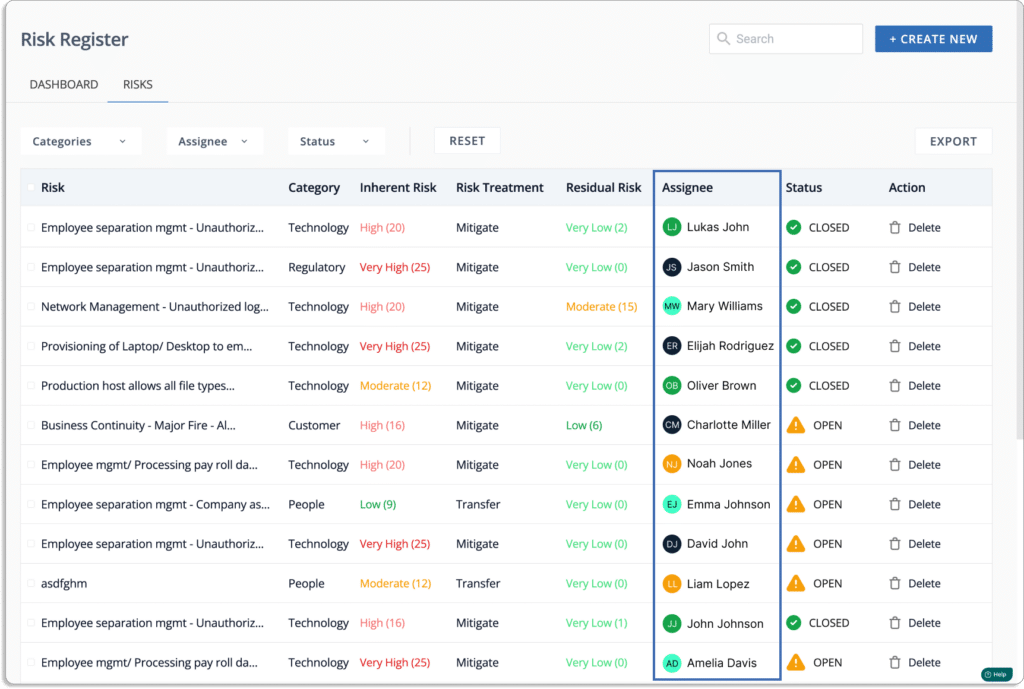
You can also create your custom risk with the Scrut, as shown in the screenshot below.
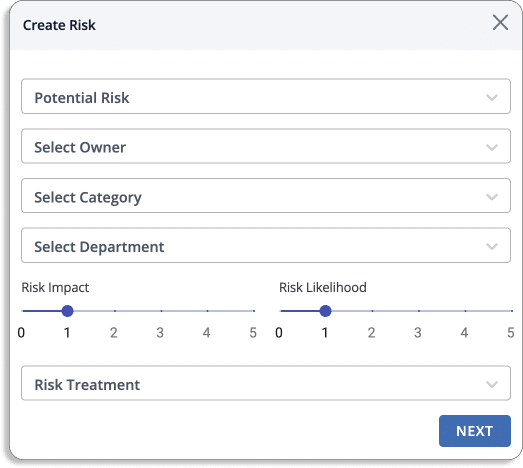
Risk assessment
Once your risk register is built, it’s time for risk assessment. Risk assessments are a type of security control that must be implemented as part of SOC 2.
Scrut eliminates the time spent creating and mapping risks and threats, allowing you to begin risk assessments in minutes. With Scrut’s continuous risk monitoring, you can stay on top of your risk posture.
Risk = Likelihood * Impact
Scrut risk scoring is based on the likelihood and impact of events, as shown in the screenshot below. The likelihood score ranges from 1-5, with one being very low and five being very high, and the impact score also ranges from 1-5, with one being very low and five being very high. The inherent risk score is then calculated by multiplying the likelihood and impact scores, resulting in a score between 0-25. A higher score indicates a higher level of inherent risk.
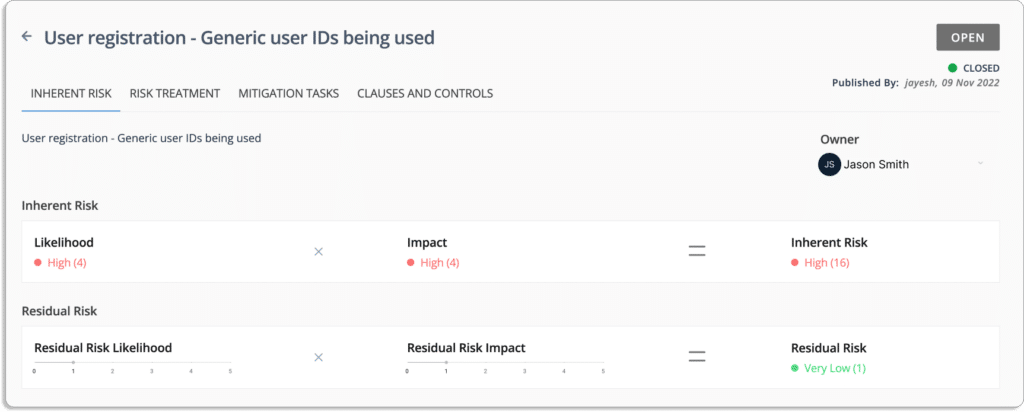
Calculating the inherent risk for the above example:
Likelihood = 5 (very high)
Impact = 4 (high)
Inherent risk = Likelihood (5) * Impact (4) = 20 (high)
The final score lies between 0 – 25.
- 0 – 5 – Very Low
- 6 – 10 – Low
- 11 – 15 – Moderate
- 16 – 20 – High
- 21 – 25 – Very High
Users get a visual overview of their risk profile at this step, as shown in the risk heatmap screenshot below.
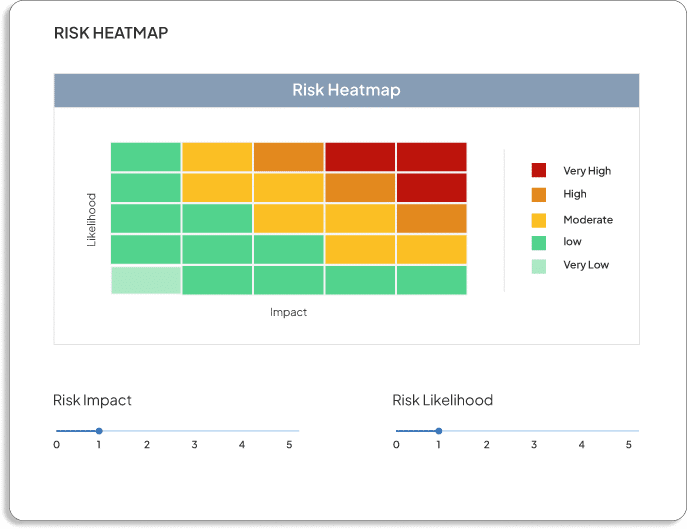
Risk Remediation
An effective SOC 2 software must include risk treatment actions that can be configured with a risk owner, start date, end date, and organizational links.
Scrut provides four ways of treating the risk. You can choose to ignore, accept, transfer, or mitigate each risk.
- Risk remediation – eliminate the risk.
- Risk mitigation – minimize the impact or likelihood of the risk.
- Risk transfer – transfer the risk to another party.
- Risk acceptance – accept the risk.
To continue with our example, you can select your risk treatment plan as accept, mitigate, transfer, or avoid, as shown in the screenshot below.

With Scrut, you can assign risks to team members.
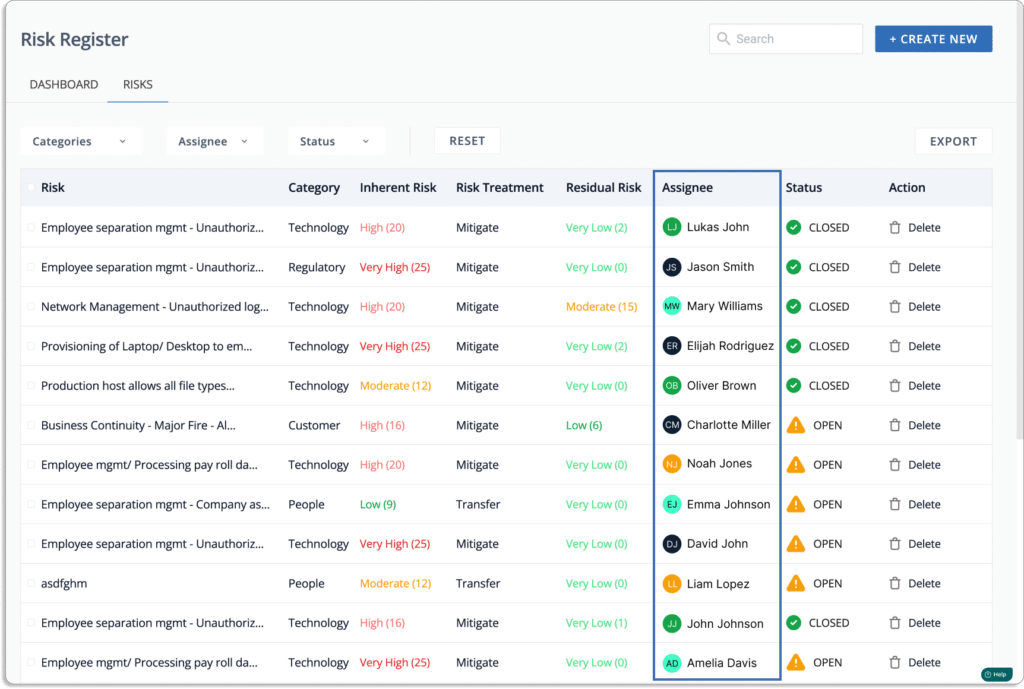
Vendor risk management capabilities
Vendor risk management and evaluation functionality are critical with hundreds of vendors in the organization’s ecosystem. Inadequate visibility into all vendors and how they interact with your company can lead to SOC 2 noncompliance.
Scrut streamlines vendor compliance checks by developing quick, effective, and efficient methods for evaluating, monitoring, and managing vendor risk. With Scrut vendor risk management, you can upload your security questionnaire or use our pre-built templates. The platform centralizes all vendor security certifications, software vendor audits, and paperwork and seamlessly shares vendor responses with customers and auditors.

Duplication of effort
Scrut automatically maps artifacts to all the standards you wish to comply with, so there is no need for duplicate effort when going through multiple standards and regulations. This means you only have to do the work once and don’t worry about creating and mapping policies for each standard separately.
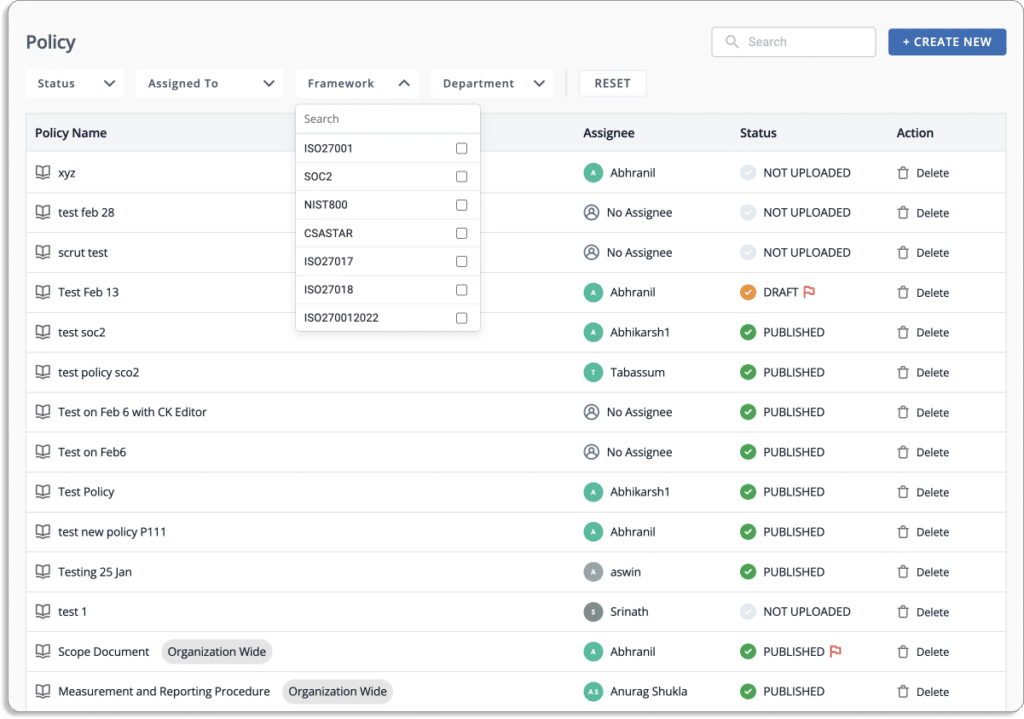
Collaboration with auditor
It is difficult to collaborate with auditors on hundreds of pieces of evidence. Scrut puts you in charge of creating audit projects and managing access with a few clicks. You can invite auditors to the platform and manage multiple complex audits simultaneously to make it more efficient and painless. Users can also assign tasks to team members.
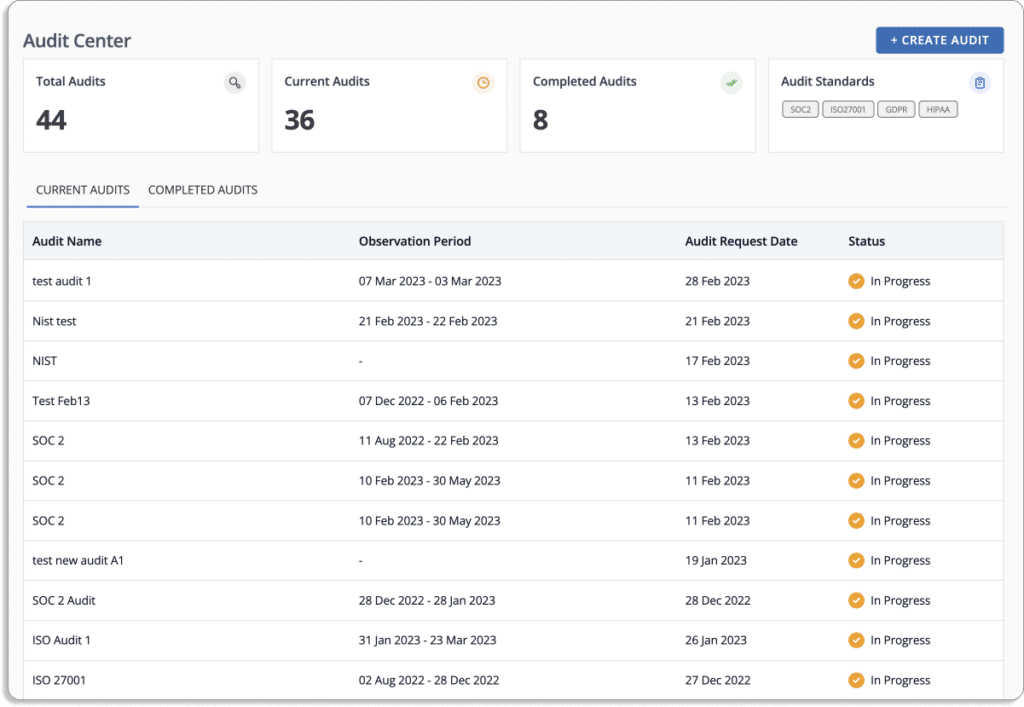
A single-window solution
Scrut smartGRC provides a true single-window experience for ensuring compliance with multiple information security frameworks. You can map your custom controls to pre-built ones mapped to globally recognized frameworks. SOC 2, SOC 3, ISO 27001, ISO 27701, ISO 27017, ISO 27018, ISO 22301, ISO 20000-1, GDPR, HIPAA, FedRamp, CMMC, CCPA, and PCI DSS are among the frameworks supported by the platform.
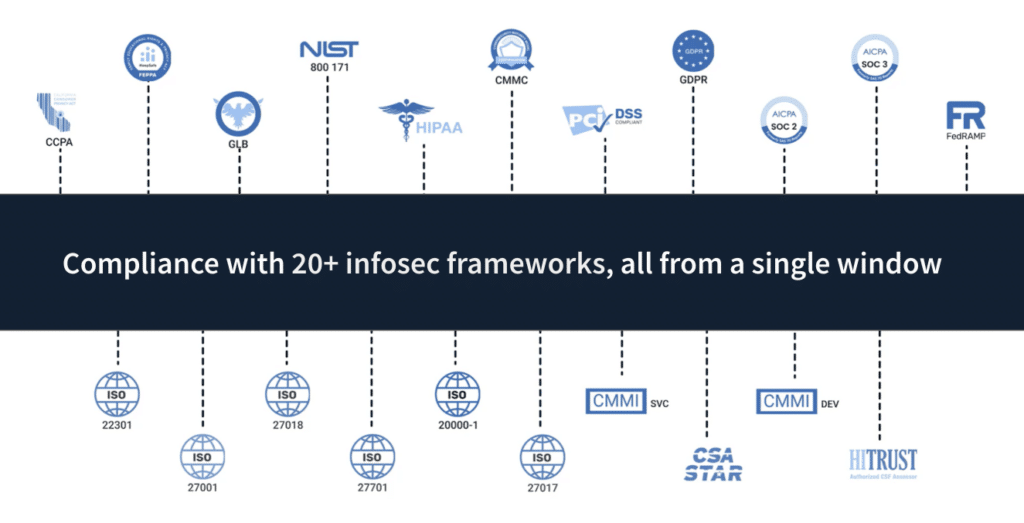
We have also established a network of pre-screened auditors and VAPT consultants who will be available to you as needed to streamline the audit procedure and assist you at every stage of your compliance journey, as shown in the screenshot below.
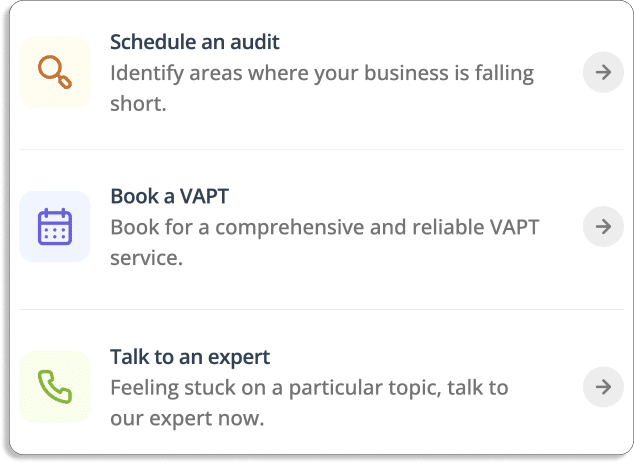
Scrut’s partner network auditors are familiar with the platform. This simplifies the audit process and reduces the audit time from one week to a few hours.
Trust Vault to accelerate the sales process
An effective SOC 2 compliance software must include Trust Vault to accelerate the sales process. Scrut Trust Vault allows you to build trust with customers, partners, investors, and others.

The platform speeds up your sales by removing the manual effort and time required to share various InfoSec documents during the sales process. It eliminates the time-consuming process of handling manual requests for security questions, reports, and certificates. The tool gives users real-time and transparent visibility into their security and compliance posture.
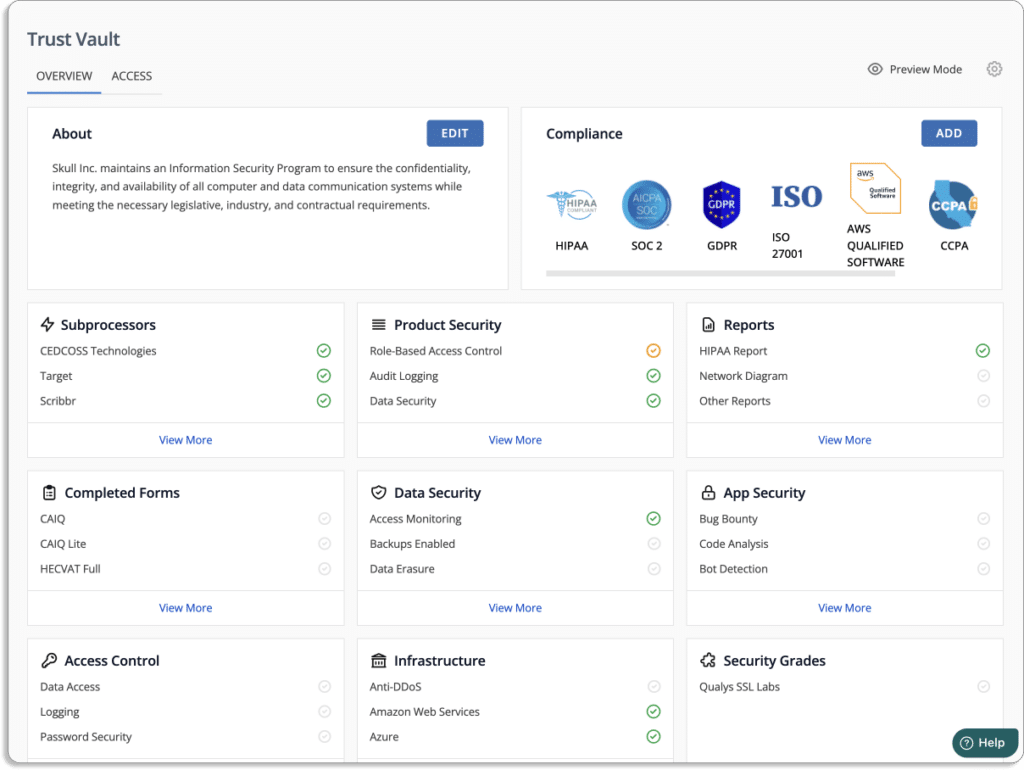
Furthermore, it increases enterprise sales by displaying your compliance certifications, attestations, and reports in one location.
The screenshot below shows that the Scrut product security dashboard provides real-time security insights.
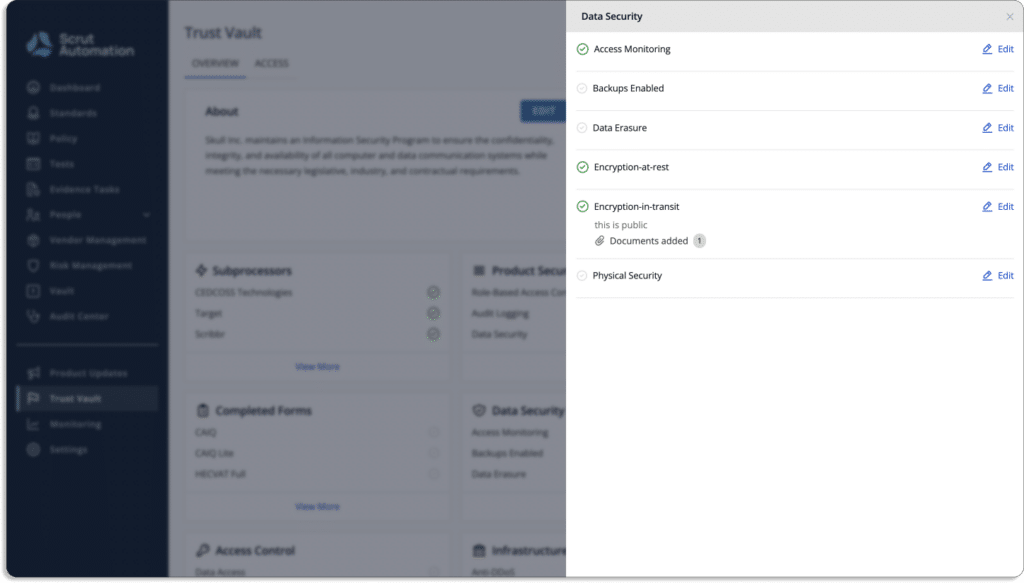
Check a few of our customer reviews below:
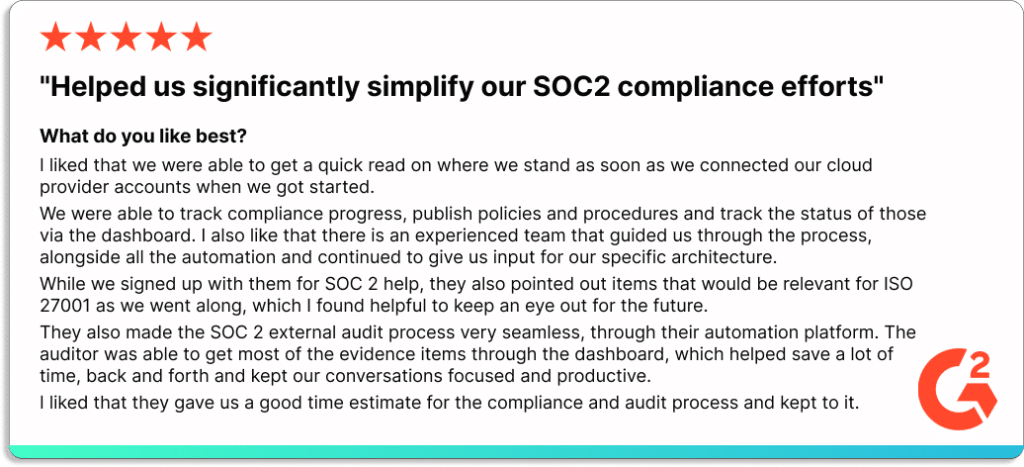


Case study: Learn how Quickwork uses Scrut smartGRC automation to accelerate SOC 2 compliance.
Sign up for a personal demo to see how Scrut can help you with your SOC 2 compliance.
Final thoughts
In conclusion, SOC 2 compliance is essential for safeguarding sensitive data and maintaining customer trust. Choosing the right SOC 2 compliance software, such as Scrut, streamlines the process, automates tasks, and enhances security measures. It enables collaboration with auditors, simplifies risk management, and accelerates the sales process with Trust Vault. Invest in SOC 2 software to prioritize data security and privacy, ensuring a secure and trustworthy business environment.
FAQs
SOC 2 software is a specialized technology solution designed to help organizations achieve and maintain SOC 2 compliance efficiently. It streamlines the compliance process by providing features such as risk assessment, evidence collection, automated compliance assessments, security monitoring, and vendor management capabilities.
Investing in SOC 2 compliance software like Scrut offers benefits such as streamlined compliance processes, enhanced security measures, automated risk management, improved collaboration with auditors, and accelerated sales through Trust Vault. It helps organizations prioritize data security, maintain customer trust, and ensure a secure business environment.
SOC 2 compliance software with features like Trust Vault, as seen in Scrut, accelerates the sales process by providing a centralized location for compliance certifications, attestations, and reports. It eliminates the need for manual sharing of security documents during the sales process, increasing transparency and building trust with customers, partners, and investors.
